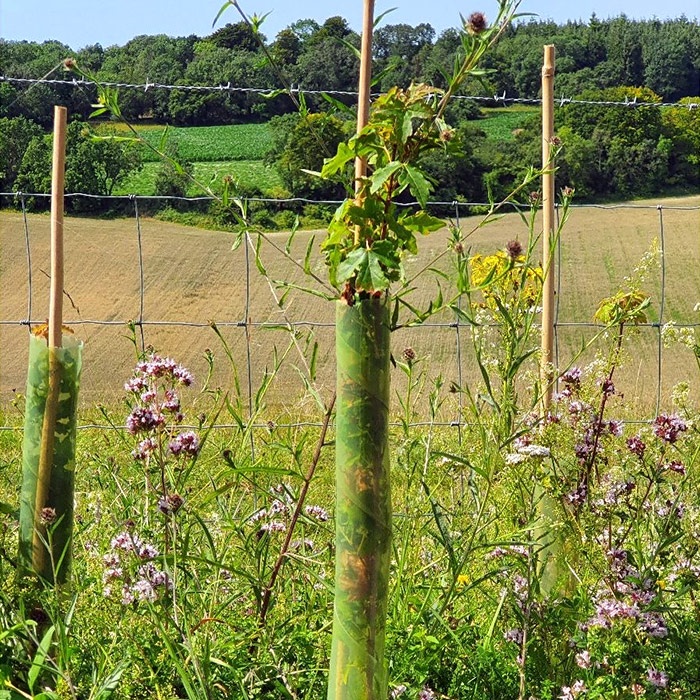Plant
Planting bare root or cell grown plants is a straightforward task, however, do not attempt to plant if the ground is frozen or waterlogged.
Find a suitable position for your plants, bearing in mind future growth and potential height and spread at maturity.
Bare rooted or cell grown plants can be ‘notch’ planted in 3 steps.
1. Begin by inserting the blade of a spade into the ground. Push the spade handle away from you and then bring it back towards you. Once you remove the spade, you will see that you have created a cavity or 'notch' in the ground.
2. For bare root - place the plant roots within the cavity and shake to ensure that all of the roots are in the cavity and pointing downwards.
For cell grown - place the cell gently into the ground. Ensure the top of the plug (the soil surrounding the roots) is positioned at 2 to 4cm below the surface to avoid drying out.
3. Fill the cavity with soil. Use your heel to firm the soil around the plant to remove any air pockets. Once planted, give them a good water if practical to do so.
You are now ready to install your support and protection.
Support
1. After planting, position the cane on the windward side if there are strong prevailing winds, and between 2cm to 5cm from the base of the plant.
2. Press the cane into the ground (ideally knocking 1/3 of its height into the ground). Ensure it is vertical (particularly important on sloping ground).
Protect
1. Bio Spirals can be installed by feeding over the top of the plant and cane taking care not to damage any stems. Alternatively, they can be wrapped around the plant from the base up. This is particularly useful for slightly broader plants.
 ImportantThe spiral should be installed the correct way up, otherwise it will drop over time, revealing the plant to browsing animals.
ImportantThe spiral should be installed the correct way up, otherwise it will drop over time, revealing the plant to browsing animals.2. At the end of its useful life (typically 3+ years) either remove the Bio Spiral for industrial composting, recycling or for energy from waste


